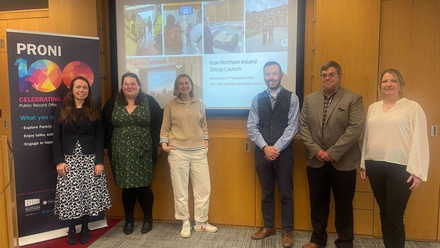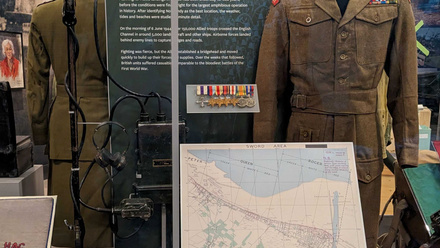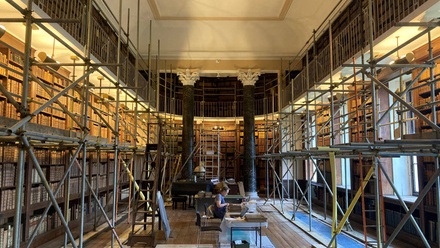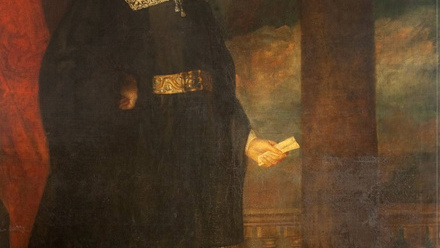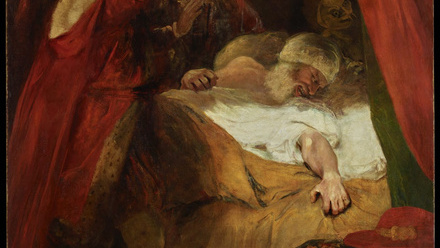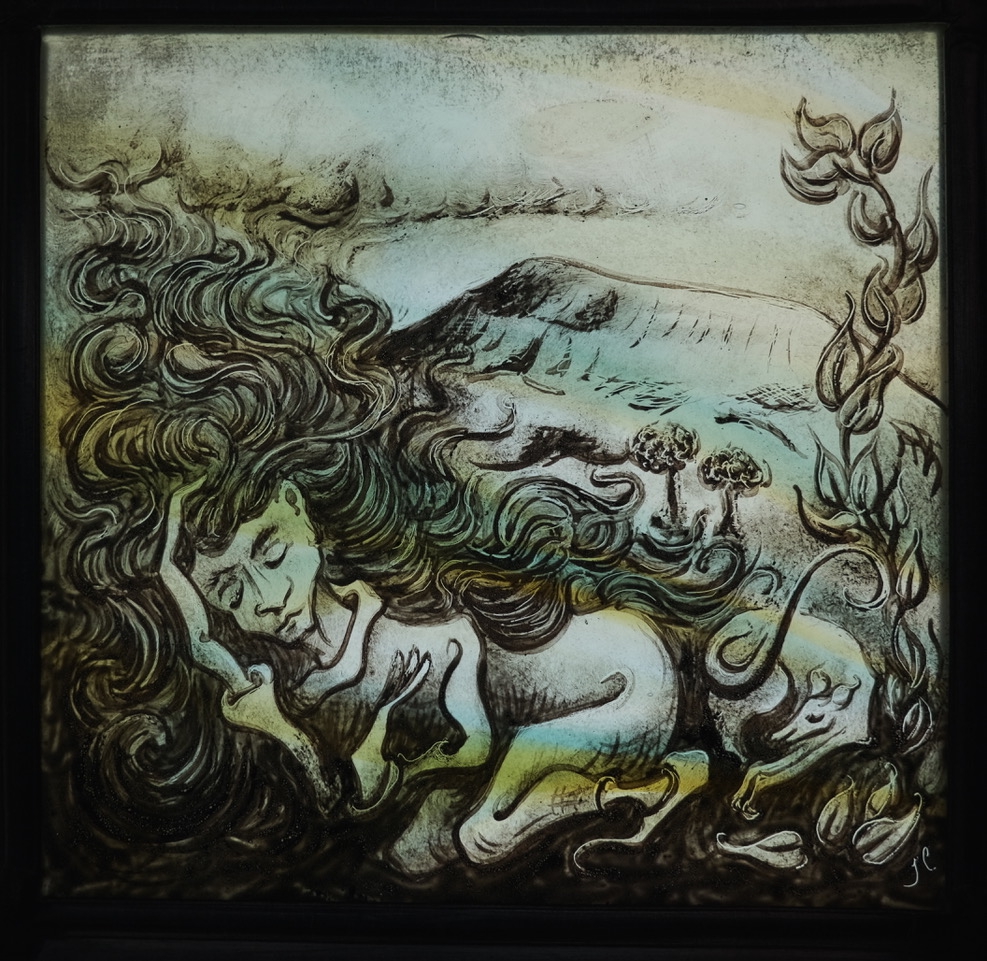
Stained glass has fascinated me for as long as I can remember.
One of my earliest memories is of watching the play of coloured light on walls, transmitted through the stained glass windows of my local church. Leaving school at sixteen, with few qualifications but a passion for art and history, I was accepted by York Glaziers Trust into a four year indentured apprenticeship where I worked under supervision on challenging and prestigious conservation projects. After six years in York, and a further two years working for Dennis King - at that time one of the Trust's advisers - my chief obsession was a continuing fascination with the decorated surface and the way it modulates light - the artwork on the glass. My conservation practice was established in 1987, but I have been creating small original works for even longer.
Privileged access to and close study of historically significant stained glass, personal researches and constant experimentation with all sorts of materials - sometimes with unexpected results, and the encouragement of kind friends, enabled me to develop a variety of techniques, expand my repertoire and put this knowledge to work both for restoration glass painting and in my own art. Teaching at Swansea College of Art and elsewhere for the past 25 or so years, I have shared my methods and findings. Swansea Metropolitan University, as it was then, also published my glasspainting manual Time and Temperature in 2013. In 2017, I presented a peer - reviewed paper at the International CVMA conference on the glass painting techniques of some of the major nineteenth century English stained glass companies, based on empirical observations and experience of matching original material for restoration projects.[1]
I have always doodled and drawn
I am a keen observer of nature, buildings and people, and always have to hand a small sketch book and pencil to capture the fleeting moment. Life drawing, too, is vital for both reconstruction of damaged windows, and my own work. Some of these ideas have, over the years, found their way into my own stained glass pieces, which I work on in my spare time; sometimes at the end of the day, or waiting for paint to dry or kiln to come up to temperature. Sources of inspiration are everywhere, and eclectic. My work has been described as idiosyncratic, quirky and painterly: most pieces have a strong narrative element. I really enjoy working small - as well as the practical constraints of time and materials, it's an indulgence, contrasting with the demands of the architectural scale of my restoration work. One recent piece, The End of Earth, a very personal comment on the existential crises we face as a species, is my smallest yet.
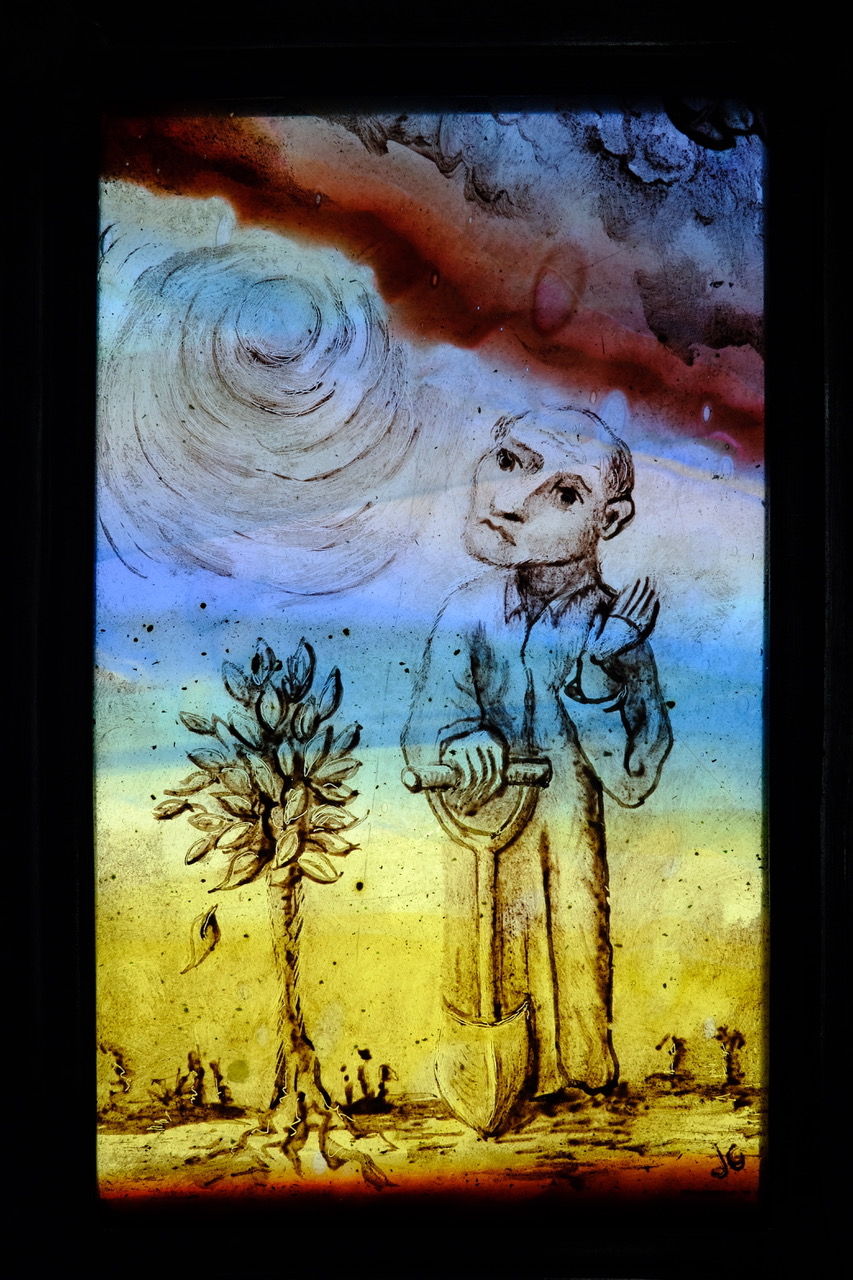
The End of Earth , 2½" x 3½", 2021
I am always surprised when a complete stranger buys one of my pieces, as they are mainly the result of my need to create and paint, or simply because an idea won't go away. I recently completed a sequence of seven small roundels begun when I was an apprentice, illustrating various stages in the making of a window. Sometimes a specific commission comes my way, and can be fun, if challenging. In February, a Valentine gift was requested at less than a week's notice, with the brief that the intended recipient was "missing Lancashire". Dreaming of Pendle was the result. Given my conservation background, with close and prolonged opportunities for studying and replicating the work of others, it is perhaps inevitable that "borrowings" occasionally appear as a detail in my work, sometimes, but not always, intentionally. E B-J, conceived, designed and realised for the Inspired by Burne - Jones exhibition, includes two pieces of an ambiguous stormy sea; this is copied from a stylised cloud detail by Burne-Jones in the tracery of a Brighton church window.
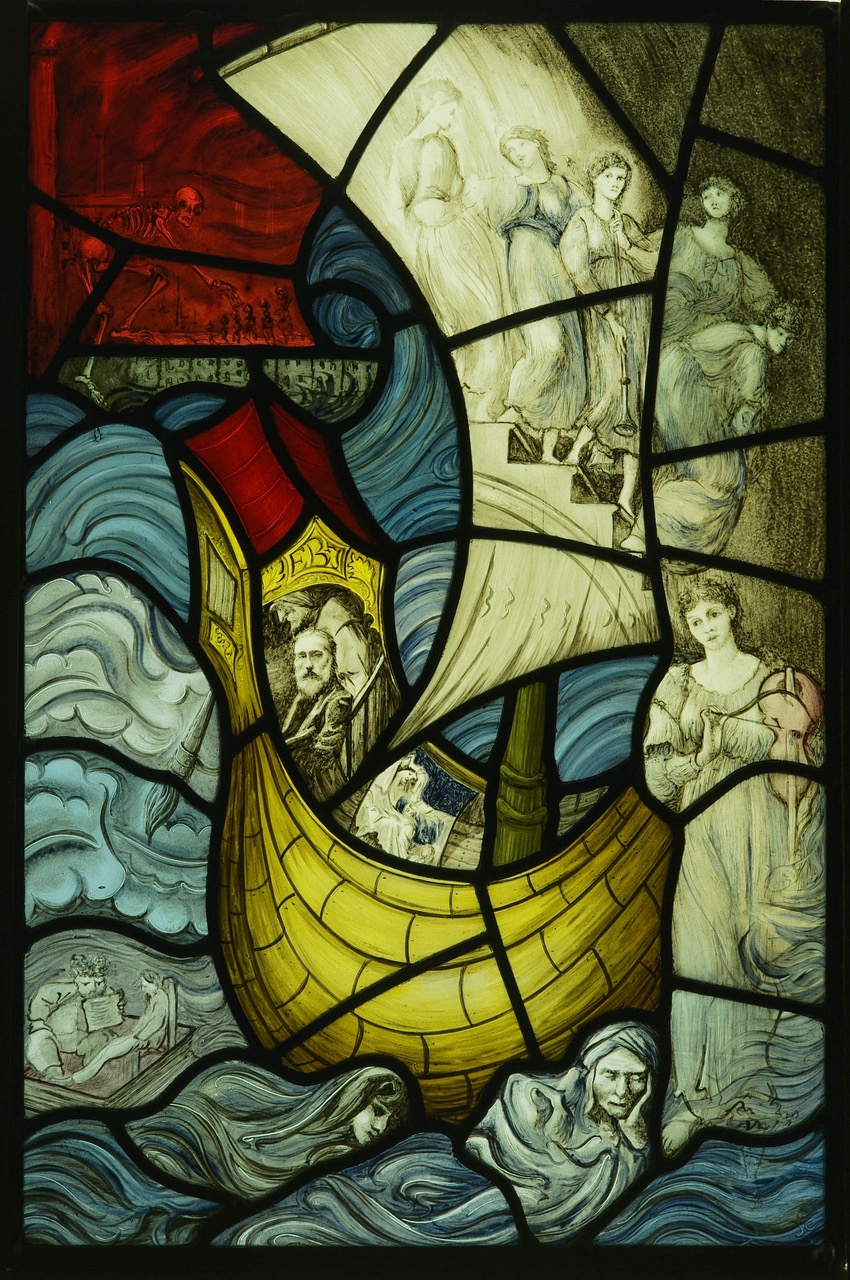
E B-J, 9" x13", 2019, for Inspired by Burne-Jones exhibition
'Journeys' Exhibition
One current project is an ongoing collaboration with several stained glass creative artists on the theme of Journeys. It was planned to happen in July 2020 as a one-off exhibition in Weston All Saints church, in Wharfedale. When Covid intervened, several of us who had already started work set up an online exhibition Journeys - Teithiau providing virtual glimpses into our studios and our working methods as artists; the project has taken a direction none of us anticipated in March last year. The exhibition runs until 23rd June at the Stained Glass Museum, Ely Cathedral with two further venues now confirmed for 2021.
In March 2020, we had removed the south clerestory glazing at St Mary's church in Barnard Castle as part of a larger Heritage Lottery funded restoration project so I had plenty of work on the glazing bench, though it was a lonely couple of months, working long hours, and initially alone with only the radio for company, due to Covid restrictions. When it was ready to reinstate, I was again fortunate that, although my site buddy was shielding, my younger son, a furloughed professional musician, came along as my "apprentice" - his first experience of site work. This engendered local interest, and the editor of the Teesdale Mercury came to interview us. Barnard Castle really is a very special place, and the warmth of the relationship provided a second venue for the exhibition, which has grown into an integral part of the church's "Windows to the World" mini-festival, 12th -23rd July, with three concerts, organised by my son, and featuring a number of his colleagues and friends.
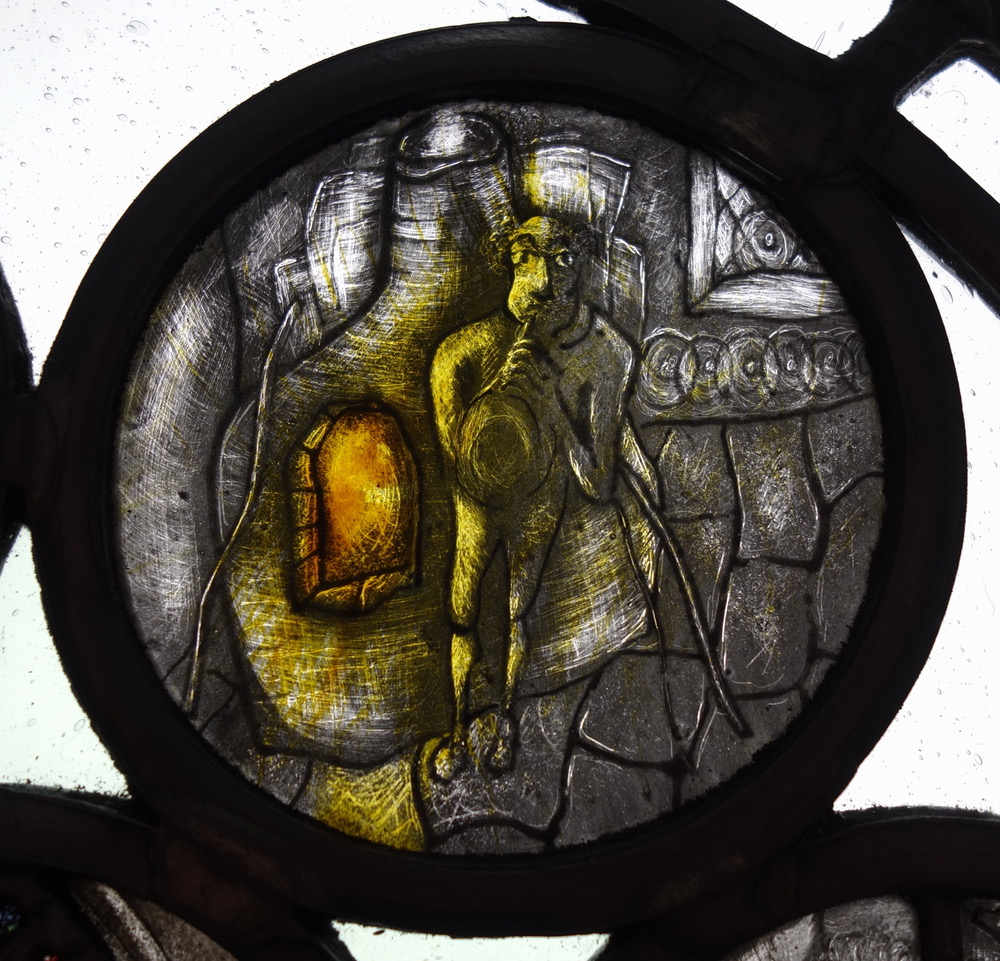
The Glassblower, from a series of roundels 3" diameter, 1980
St Helen's church Denton, in the same benefice as Weston, and close to home, has the only complete extant picture window by Henry Gyles, executed principally in enamels on white glass, with some pot metals. Enamels of this date are particularly at risk, with a tendency to part company from the glass substrate. In my conservator's role and that of DAC adviser, I have had a watching brief on this window since I first reported on its condition for Churchcare in 2014. Having dealt with other urgent building priorities, there is now a determination in the parish for its conservation. The church will be open during the second of this year's planned Heritage Weekends, 11th-12th September, a great opportunity for raising local awareness of the significance of the window. The church will also be home to Journeys - Teithiau over the weekend. I hope to be there as both conservator and artist, and as ambassador for stained glass in general.
Of the six artists, I am the only one whose principal career has been in conservation. It's probably fair to say this is reflected in my techniques and brushwork. Rachel Phillips is using fused glass techniques for her exhibition pieces, Catrin Davies, Nicola Kantorowicz, Elizabeth Lamont and Christian Ryan are all using traditional glass painting techniques but to various different effects.
My "Journeys" pieces, predominantly grisaille and silver stain on antique glasses, are created using the same materials, techniques and brushes as my restoration painting.
Artist's Journey and Over the Hills are painted as I would approach Georgian restoration work, with much use of oils and some enamel. The Red Suitcase and Companions through Time use vinegar-based mediums to achieve a crisper effect, while The Navigator uses a combination of oil and water based mediums, often needed for successful replication of mid nineteenth century stained glass.
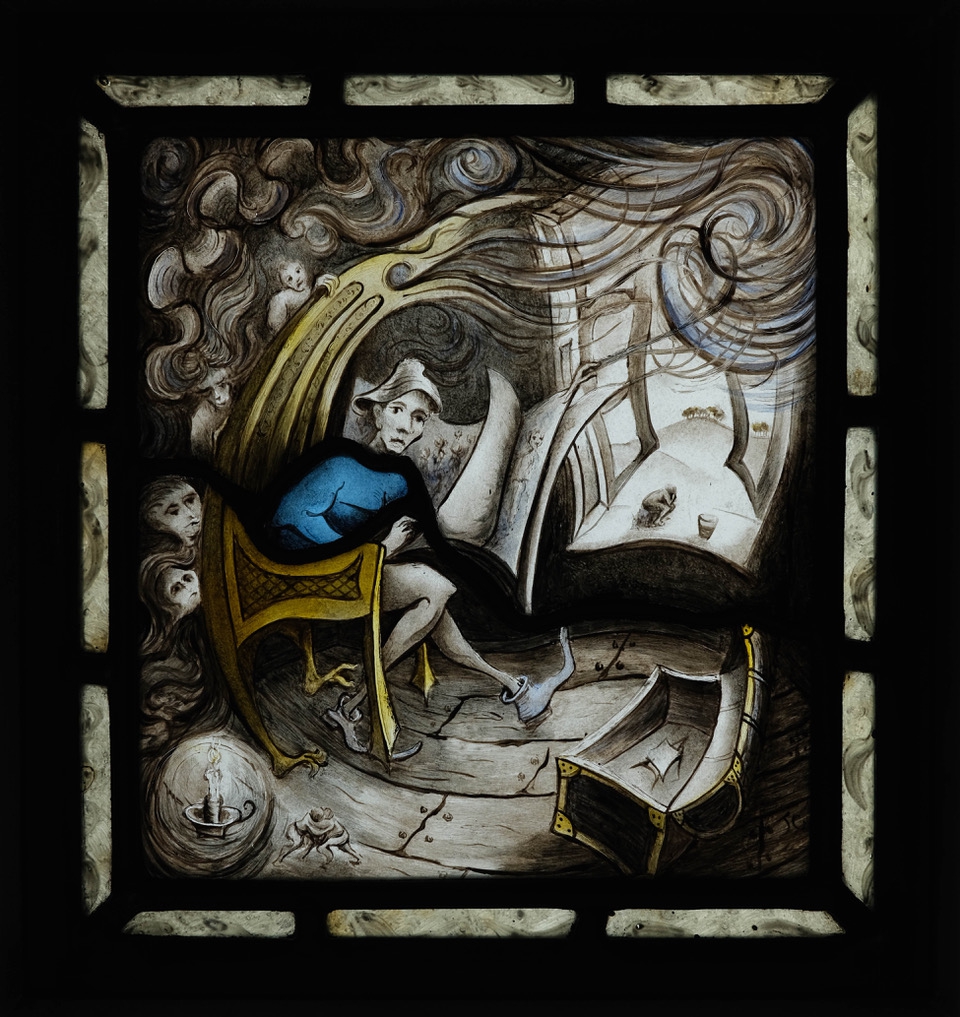
Artist's Journey #1, 8" x 9", 2020, for Journeys exhibition
Process
I paint freehand onto the glass, with my preliminary sketch alongside - what Hockney calls "eyeballing". The final piece often departs from the initial drawing, sometimes significantly as the painting evolves. This is one of the principal differences between my creative work and restoration painting. For the latter, I will usually have prepared a cartoon, reconstructed as accurately as possible from the evidence available, from which I take a simple line drawing to sit under the glass as I paint. But even here I "eyeball' the adjacent cartoon and any original fragments, to keep the paint lines flowing, or the replacement will lack the spontaneity and liveliness of the original, however faithful the copy.
I am fortunate to spend my working time in architectural glass conservation, though perhaps being on site in bad weather is not as appealing as it once was. But, for example, finding a thumbprint fired into medieval paint by one of my anonymous predecessors is a direct connection across the centuries and still feels like magic. Every time. And my ongoing research journey into historic techniques and experimentation has not only informed my restoration glass painting; it has been a liberating influence on my own artistic expression.
Check out the exhibition's website for updated information on the current exhibition.
[1]Scratching the Surface: observations on techniques and characteristics of commercial glass painting of the late c19 published in the proceedings volume, and also in Glass Technology: European Journal of Glass Science and Technology, 2018, Vol 59 (4), 121-6. ISSN 1753-3546: DOI 10.13036/17533546.59.4.105


